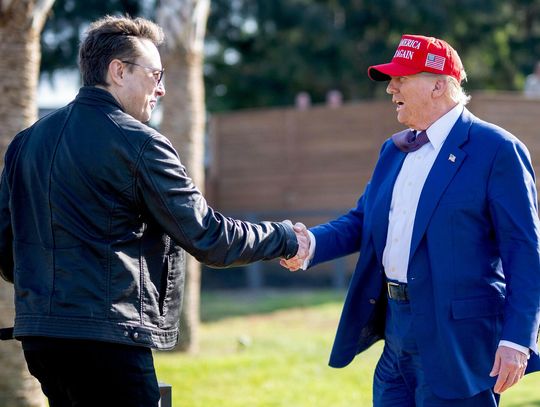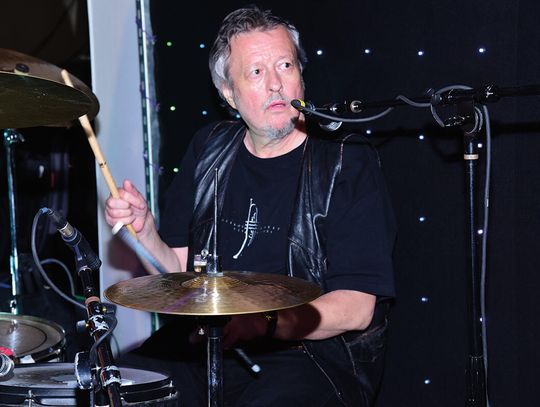Sekretarz stanu Antony Blinken, minister spraw zagranicznych Australii Marise Payne i minister spraw zagranicznych Wielkiej Brytanii Elizabeth Truss odbyli trójstronne spotkanie podczas Monachijskiej Konferencji Bezpieczeństwa. Tematem spotkania liderów, powołanego z inicjatywy Joe Bidena we wrześniu 2021 r., były postępy poczynione we wdrażaniu inicjatyw w ramach trójstronnego partnerstwa bezpieczeństwa AUKUS. Pakt ten koncentruje się na utrzymaniu pokoju i stabilności w regionie Indo-Pacyfiku.
Polityczne i strategiczne konsekwencje paktu AUKUS obejmującego Stany Zjednoczone, Wielką Brytanię i Australię wciąż znajdują się w fazie rozwoju. Szczegóły dotyczące tego, w jaki sposób Australia pozyska okręty podwodne o napędzie atomowym (SSN), były często pomijane. W kuluarach Monachijskiej Konferencji Bezpieczeństwa kwestia ta została podniesiona przez Antony’ego Blinkena i Marise Payne.
Australia w ramach inicjatywy AUKUS uzyska konwencjonalnie uzbrojone okręty podwodne o napędzie atomowym. Przedstawiciele australijskiego rządu planują uzbroić okręty podwodne w broń konwencjonalną. Jednak obecnie nie podjęto jeszcze decyzji w sprawie szczegółów programu, w tym wyboru floty opartej na amerykańskich lub brytyjskich okrętach podwodnych o napędzie atomowym. Docelowo Królewska Marynarka Wojenna Australii zakupi osiem planowanych atomowych okrętów podwodnych. Całość będzie kosztować około 70 miliardów dolarów, jednak według wielu ekspertów cena ta może wzrosnąć. Raport opublikowany w grudniu przez Australijski Instytut Polityki Strategicznej wykazał, że program okrętów podwodnych z napędem jądrowym kosztowałby nawet ponad 80 miliardów dolarów.
Sam pomysł wprowadzenia do Królewskiej Marynarki Wojennej Australii okrętów o napędzie atomowym wydaje się podstawową decyzją, która ma znaczenie w kontekście dalszej konkurencyjności na Indo-Pacyfiku wobec rosnącej pozycji Chin w tym regionie. Chodzi głównie o odległości, które dzielą wybrzeża Australii od Morza Południowochińskiego. Z bazy RAN w pobliżu Perth do wód tego regionu jest około 5500 kilometrów. Królewska Marynarka Wojenna Australii będzie musiała konkurować z chińskimi SSN-ami, które mogą obecnie nie dorównywać jakości zachodnim odpowiednikom, jednak postępy we flocie nawodnej wskazują, że ich jakość i liczba prawdopodobnie szybko wzrosną w ciągu następnej dekady.
W czasie trójstronnego spotkania przedstawicieli USA, Wielkiej Brytanii i Australii, wyrazili oni chęć pogłębienia współpracy w zakresie dodatkowych i zaawansowanych zdolności wojskowych i technologicznych. W tym celu również sam Blinken odbył podróż do państw sojuszniczych w regionie Indo-Pacyfiku na początku lutego bieżącego roku.Opublikowana 11 lutego strategia administracji Bidena dotycząca dalszych działań w regionie Indo-Pacyfiku potwierdza to, co stało się widoczne w pierwszym roku prezydentury Bidena. Chodzi o wyraźne ukierunkowanie wektora polityki międzynarodowej na region Azji Wschodniej i dążenie do wzmocnienia zbiorowych zdolności obronno-prewencyjnych partnerów i sojuszników USA. Prawie pięć miesięcy po ogłoszeniu paktu bezpieczeństwa AUKUS między Australią, Wielką Brytanią i Stanami Zjednoczonymi, strategia ta wydaje się okazją, by uznać wartość, jaką sojusznicze państwa europejskie mogą wnieść na Indo-Pacyfik.
Strategia obecnej administracji Białego Domu podtrzymuje działania angażujące Stany Zjednoczone w regionie Azji Wschodniej i zakłada ponadpartyjne zrozumienie, iż region Indo-Pacyfiku odgrywa obecnie kluczowe znaczenie dla bezpieczeństwa Stanów Zjednoczonych. Dokument jest również symbolem dostrzeżenia przez Bidena rosnącego zagrożenia ze strony Chińskiej Republiki Ludowej nie tylko na Morzu Południowochińskim, ale również w całościowym „wyścigu mocarstw” pomiędzy USA i ChRL. Z założeń strategicznych wynika, że administracja obecnego prezydenta USA postrzega Azję Wschodnią jako region koniecznego zintensyfikowania obecności amerykańskiej. Działania te widać już od marca 2021 roku, kiedy to po szczycie pomiędzy dyplomacjami USA i ChRL na Alasce, Stany Zjednoczone rozpoczęły planowanie rozmieszczenia kolejnych baz wojskowych na terytorium Japonii i Korei Południowej.
Plan dalszych działań amerykańskich na Indo-Pacyfiku wyraźnie stwierdza, że kluczowym powodem ich zaangażowania w tym regionie jest wzmożona aktywność Chin. Odnosi się ona do wykorzystania przez ChRL instrumentów ekonomicznych, dyplomatycznych, wojskowych i technologicznych, które dążą do rozszerzania strefy chińskich wpływów w regionie Indo-Pacyfiku.Pozostałymi zagrożeniami, które dostrzega Waszyngton, jest chińska ofensywa ekonomiczna wobec Australii. Reżim Xi Jinpinga nałożył na australijskie wino cła o wysokości nawet do 212 proc. Wcześniej Państwo Środka podejmowało działania mające na celu ograniczenie importu różnych produktów z Australii, m.in. węgla, miedzi czy jęczmienia. Takimi krokami Pekin wysyła jasny sygnał do sojuszników Stanów Zjednoczonych w regionie oraz państw, które pragną wejść do antychińskiego sojuszu, któremu przewodzić mają Stany Zjednoczone.
Innymi zagrożeniami ze strony ChRL, które dostrzegają Amerykanie, jest rosnąca presja na Tajwan oraz coraz mocniejsza aktywność wojsk chińskich na Morzu Południowochińskim.Stany Zjednoczone, dostrzegając rosnącą potęgę Chin, zdają sobie sprawę, że aby skutecznie prowadzić swoje interesy w tym regionie, muszą budować sojusze i środowiska istotne z punktu widzenia strategicznego, dążąc do równowagi wpływów w tym regionie. Obecna sytuacja w Ukrainie nie dezorientowała amerykańskiej administracji, która doskonale wie, iż pomimo oczywistej wartości Ukrainy dla Stanów Zjednoczonych i NATO, to region Indo-Pacyfiku jest miejscem, gdzie toczy się walka o bezpośrednią dominację na świecie.
Jan Hernik
Dziennikarz i publicysta, który zdobywał doświadczenie w polskich niezależnych mediach internetowych. W swojej karierze brał udział w tworzeniu projektów związanych z polityką krajową i geopolityką. Hernik ma doświadczenie w pracy jako prezenter telewizyjny i redaktor portalu informacyjnego. W Warsaw Institute jest redaktorem naczelnym strony internetowej i ekspertem w dziedzinie Stanów Zjednoczonych.Absolwent Ośrodka Studiów Amerykańskich Uniwersytetu Warszawskiego. Specjalizuje się w teorii wpływu religii, rasy i pochodzenia etnicznego na wybór polityczny w amerykańskich wyborach prezydenckich. Jego zainteresowania badawcze obejmują także erę kolonialną Stanów Zjednoczonych, prawo do posiadania broni oraz amerykańską myśl wolnościową.
Niniejszy artykuł powstał w ramach działalności społeczno-misyjnej polskiego think tanku Warsaw Institute. Jeśli cenicie Państwo przygotowane przez naszych ekspertów treści, apelujemy o wsparcie finansowe naszej działalności realizowanej na zasadzie non-profit. Do regularnych darczyńców przysyłamy bezpłatnie anglojęzyczny kwartalnik The Warsaw Institute Review.Więcej informacji: www.warsawinstitute.org/support/Darowizny można dokonać bezpośrednio na konta bankowe:USD: PL 82 1020 4900 0000 8502 3060 4017EUR: PL 85 1020 4900 0000 8902 3063 7814GBP: PL 18 1020 4900 0000 8302 3069 6641PLN : PL 41 1020 1097 0000 7202 0268 6152SWIFT: BPKOPLPWDziękujemy!
Warsaw Institute to polski think tank zajmujący się geopolityką. Główne obszary badawcze to stosunki międzynarodowe, bezpieczeństwo energetyczne oraz obronność. Warsaw Institute wspiera Inicjatywę Trójmorza oraz stosunki transatlantyckie.
Warsaw Institute is a Polish think tank focusing on geopolitics. The main research areas are international relations, energy security and defense. The Warsaw Institute supports the Three Seas Initiative and transatlantic relations.
AUKUS Trilateral Meeting and the US Indo-Pacific Strategy
US Secretary of State Antony Blinken, Australian Minister of Foreign Affairs Marise Payne, and British Foreign Secretary Elizabeth Truss held a trilateral meeting at the Munich Security Conference. The meeting of the members of the pact, concluded at Joe Biden’s initiative in September 2021, concerned the progress in implementing initiatives under the AUKUS trilateral security partnership. This pact focuses on maintaining peace and stability in the Indo-Pacific region.
The political and strategic implications of the AUKUS pact between the United States, the United Kingdom, and Australia, are still under development. To date, the details on how Australia will acquire nuclear-powered submarines (SSNs) have often been overlooked. However, this issue was raised by Antony Blinken and Marise Payne behind the scenes of the Munich Security Conference.
Australia will obtain conventionally armed nuclear-powered submarines under the AUKUS initiative. Australian government officials plan to arm the submarines with conventional weapons. The details of the program are yet to be established, likewise the choice between the US and British submarines still has to be made. Ultimately, the Royal Australian Navy will purchase eight nuclear submarines. The whole project is worth about $70 billion, but, according to numerous experts, this price could still rise. A report published by the Australian Strategic Policy Institute in December found that the nuclear submarine program could cost more than $80 billion.
The very idea of introducing nuclear-powered vessels into the Royal Australian Navy (RAN) appears to be a fundamental decision that is significant in the context of further competitiveness in the Indo-Pacific in the face of China’s growing position in the region. The main concern is the distance between Australia’s coasts and the South China Sea. The waters of the region are located about 5,500 kilometers away from the RAN base near Perth. The Royal Australian Navy will have to compete with Chinese SSNs, which currently may not match the quality of their Western counterparts. Yet, advances in the surface fleet indicate that their quality and number are likely to increase rapidly over the next decade.
During the trilateral meeting, the representatives of the US, the UK, and Australia expressed their desire to deepen cooperation on additional advanced military and technology capabilities. Precisely for this reason Blinken visited allied countries in the Indo-Pacific in early February this year.
The Biden administration’s strategy for the way forward in the Indo-Pacific, released on February 11, confirms what has become apparent in the first year of Biden’s presidency – a clear foreign policy orientation towards East Asia as well as an effort to strengthen joint defense and preventive capabilities of US partners and allies. Almost five months after the announcement of the AUKUS security pact between Australia, the United Kingdom, and the United States, this strategy appears to be an opportunity to recognize the value that allied European states can bring to the Indo-Pacific.
The strategy of the current White House administration upholds efforts to engage the United States in East Asia and assumes a bipartisan understanding that the Indo-Pacific region plays a critical role in US security now. The document also represents Biden’s recognition of the growing threat from the People’s Republic of China (PRC) not only in the South China Sea but also in the overall superpower rivalry between the US and the PRC. The strategic assumptions imply that the administration of the current US president notices the need to intensify the American presence in East Asia. Such actions could have already been observed from early March 2021. Then, after the US-China summit in Alaska, the United States began planning the establishment of additional military bases in Japan and South Korea.
The plan concerning further US actions in the Indo-Pacific clearly states that the main reason for its involvement in the region is the increased Chinese activity. It refers to the use of economic, diplomatic, military, and technological instruments by the PRC that seek to expand China’s sphere of influence in the Indo-Pacific.
Washington recognizes also the threat associated with China’s economic offensive against Australia. Xi Jinping’s regime imposed tariffs of up to 212% on Australian wine. Earlier, the PRC took steps to restrict imports of various products from Australia, including coal, copper, and barley. This way Beijing is sending a clear message to the United States’ allies in the region and the countries that want to join the anti-China alliance to be led by the United States.
The Americans are also aware of other threats from the PRC, such as the growing pressure on Taiwan and the increasing activity of Chinese troops in the South China Sea.
The United States, recognizing China’s growing power, realizes that in order to effectively conduct its business in the region, it must build alliances and strategically relevant environments, aiming to achieve a balance of influence in the region. The current Russia-Ukraine crisis has not confused the US administration, which is well aware that despite Ukraine’s obvious value to the United States and NATO, the Indo-Pacific is where the struggle for direct world domination is taking place.
Jan HernikJan Hernik is a journalist and publicist who gained experience in Polish independent Internet media broadcasts. In his career, he participated in the creation of projects related to domestic policy and geopolitics. Hernik has an experience in working as a TV presenter and editor of a news portal. At the Warsaw Institute, he is the editor-in-chief and expert in the field of the United States.
Hernik is a graduate of the American Studies Center at the University of Warsaw. He specializes in the theory of religion, race and ethnicity for political choice in the U.S presidential elections. His research interests also include the colonial era of the United States, the right to bear arms and the American liberal thought.















